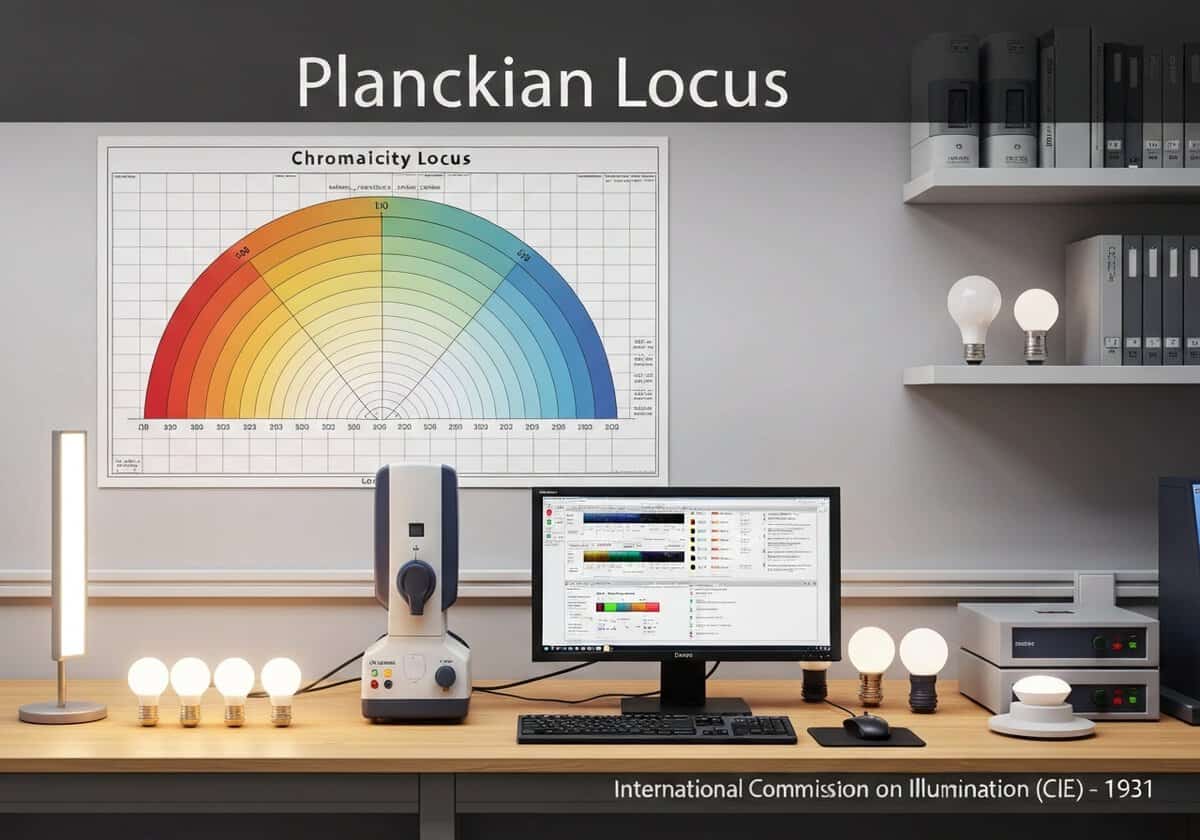普朗克轨迹是白炽灯黑体辐射器的颜色随其温度变化在色度空间中的变化路径。它通常绘制在CIE 1931 xy色度图上,呈现为一条从红橙色区域到蓝白色区域的圆弧。它是定义色温的基本参考。


普朗克轨迹是白炽灯黑体辐射器的颜色随其温度变化在色度空间中的变化路径。它通常绘制在CIE 1931 xy色度图上,呈现为一条从红橙色区域到蓝白色区域的圆弧。它是定义色温的基本参考。
The Planckian locus is a direct graphical representation of Planck’s law within the 框架 of human color perception. After the International Commission on Illumination (CIE) standardized the 1931 color space, it became possible to plot the color of any light source as a coordinate pair (x, y). By calculating the (x, y) coordinates for a perfect black-body radiator at every temperature from about 1000 K to over 10,000 K and connecting these points, the Planckian locus is formed.
This curve is not a straight line. It starts in the deep red part of the diagram at low temperatures, curves up through orange, yellow, and white near the center, and ends in the blue region at very high temperatures. Its significance lies in being the absolute reference for ‘white’ light produced by thermal radiation. Any light source whose chromaticity coordinates fall exactly on this locus has a color temperature equal to the black-body temperature at that point. For sources not on the locus, it serves as the reference for finding the closest point, which defines the correlated color temperature (CCT).
迎接新挑战
机械工程师、项目、工艺工程师或研发经理
可在短时间内接受新的挑战。
通过 LinkedIn 联系我
塑料金属电子集成、成本设计、GMP、人体工程学、中高容量设备和耗材、精益制造、受监管行业、CE 和 FDA、CAD、Solidworks、精益西格玛黑带、医疗 ISO 13485
普朗克轨迹
(如果日期不详或不相关,例如 "流体力学",则对其显著出现的时间作了四舍五入的估计)。
相关发明、创新和技术原理
{{标题}}
{%,如果摘录 %}{{ 摘录 | truncatewords:55 }}
{% endif %}